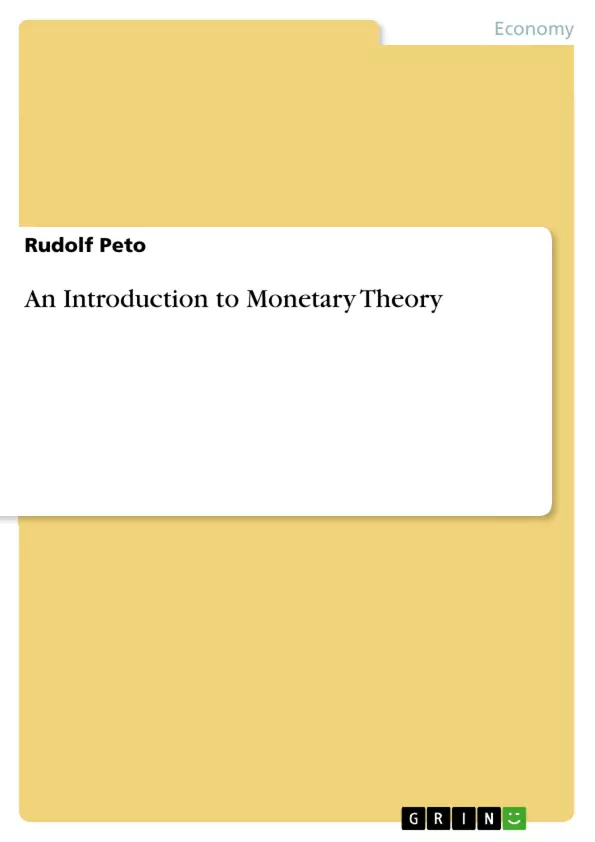This is a textbook for students and practitioners alike. It intends to explain the theoretical background of monetary policy. It is based on the author’s German book “Geldtheorie und Geldpolitik.
Inhaltsverzeichnis (Table of Contents)
- Fundamental Concepts
- Money
- Monetary Functions
- Forms of Money
- Monetary Aggregates
- Credit
- Definition of Credit
- Forms of Credit
- The Economic Function of Credit
- Liquidity
- Money
- Money Supply
- The Central Bank's Money Supply and Lending Facilities
- The Commercial Banking Sector's Supply of Book Money and Credit Facilities
- Introduction
- Fundamental Static Analysis
- Dynamic Analysis
- Base Money and Other Monetary Aggregates
- More Recent Aspects of the Money Supply
- Demand for Money
- Introduction
- Classical/Neoclassical Money Demand Theory
Zielsetzung und Themenschwerpunkte (Objectives and Key Themes)
This book aims to provide a comprehensive introduction to monetary theory, building upon a foundation of basic terms and concepts. It delves into the analysis of money supply, money demand, monetary equilibrium, interest rate formation and transmission, and ultimately, the fluctuations in the value of money. The book emphasizes the importance of understanding monetary theory as a crucial element in grasping monetary policy. Key themes explored within the text include:- The multifaceted nature of money and its functions within an economy.
- The mechanisms behind the creation and management of money supply by both central banks and commercial banking institutions.
- The factors that drive the demand for money and the interplay between money demand and supply in achieving equilibrium.
- The dynamics of interest rate formation and how monetary policy transmits its effects through interest rates.
- The critical issue of the changing value of money, a central concern in monetary theory and policy.
Zusammenfassung der Kapitel (Chapter Summaries)
Chapter 1 establishes the core concepts of money, credit, and liquidity. It defines the various functions of money, explores different forms of money and monetary aggregates, and examines the role of credit in an economy. The chapter concludes by discussing the concept of liquidity. Chapter 2 delves into the complexities of money supply. It analyzes the role of the central bank in managing the money supply and the supply of book money and credit facilities by the commercial banking sector. This chapter further explores the dynamics of money supply through static and dynamic analysis, examining the relationship between base money and other monetary aggregates, and exploring more recent developments in money supply management. Chapter 3 focuses on the demand for money, introducing the classical/neoclassical money demand theory. The chapter investigates the factors that influence individuals and businesses to hold money, considering both the demand for transaction and precautionary motives as well as the speculative demand for money.Schlüsselwörter (Keywords)
This book explores key concepts in monetary theory, including money, credit, liquidity, money supply, demand for money, monetary equilibrium, interest rate formation, and the value of money. It examines the roles of both central banks and commercial banks in managing money supply, while analyzing the dynamic interactions between supply and demand for money. The text also delves into the critical issue of the changing value of money, emphasizing its importance for understanding monetary policy.
Fin de l'extrait de 158 pages
- haut de page
- Citation du texte
- Rudolf Peto (Auteur), 2014, An Introduction to Monetary Theory, Munich, GRIN Verlag, https://www.grin.com/document/276638
Lire l'ebook



